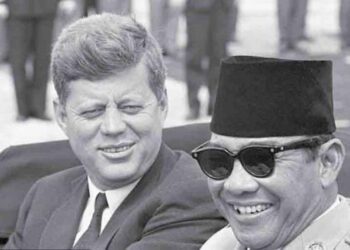
As an essential part of education in Indonesia, madrasas have become separate entities highly considered in terms of their role, contribution, existence, quality, and quality. Like its predecessors—pesantren—madrasas are the root of Islamic education for primary and secondary levels. In its long journey, there may have been millions of studies or articles about madrasas in Indonesia that have been produced by scholars or researchers, both from within the country and abroad. Of course, this is because madrasas are exciting and unique entities that have colored the history of education in Indonesia.
Madrasas always carry out changes, renewals, and innovations to answer the challenges of the times. Quality and quality development and improvement programs are always encouraged. Achievements from year to year have been achieved at the national and international levels. Slowly but surely, the ‘old’ madrasas have turned into ‘new’ madrasas. The motto “better madrasas # better madrasas” has not only become a slogan in imagination but has become a reality. Not only that, thanks to the increasing quality of madrasas, madrasas are no longer an alternative choice for parents who want to send their children to school, but madrasas have become the main choice, not an alternative anymore.
And when they have made a choice in madrasas, their children will excel in various fields. Therefore, the madrasa motto that was previously needed to be added again with the motto “my madrasa is my choice, my madrasa is my achievement.” So, year after year, madrasas increasingly affirm their existence, differentiation, and excellence in order to realize the ideals of a better national education.
Taking into account the long history of changes, improvements, and innovations made by madrasah stakeholders, it seems inappropriate if the details of history, changes, improvements, and innovations are left untied in the records. Now, to perpetuate these ideas, the Madrasa Encyclopedia book was compiled, which contains important entries or entries related to madrasas, both in terms of history, names of institutions, regulations, programs, figures, and so on. Although this book is still far from being called an Encyclopedia, as a first step to perpetuating the details of madrasas, this book is still interesting to read and also criticized.
The presence of this book certainly cannot be separated from the rapid development of education in Indonesia and also the rapid changes, innovations, and improvements in the world of madrasa education. Reading this encyclopedia is the same as following the latest developments in madrasa education and at the same time rereading the historical pages of madrasa education in the past. This encyclopedia is expected to be able to invite readers to take an excursion in the world of madrasa education and stop at the end of a positive stop: madrasas are better. Hopefully, last but not least, I would like to thank the contributors of this encyclopedia, without your contributions, this important book would not have been published. I also thank the Head of Subsection TU, M. Munir, for initiating and overseeing the program for compiling this madrasa encyclopedia until it is published and in the hands of readers. As a Madrasa Encyclopedia process, it is not enough to stop here. I hope there will continue to be improved editions from year to year. And, of course, input and criticism from readers will further enrich the content and weight of this encyclopedia.




![How to Install Windows 10 [Pictures and Explanations] How to Install Windows 10](https://mas-alahrom.my.id/wp-content/uploads/2021/12/tutorial-picture-how-install-windows-10-120x86.jpg)

